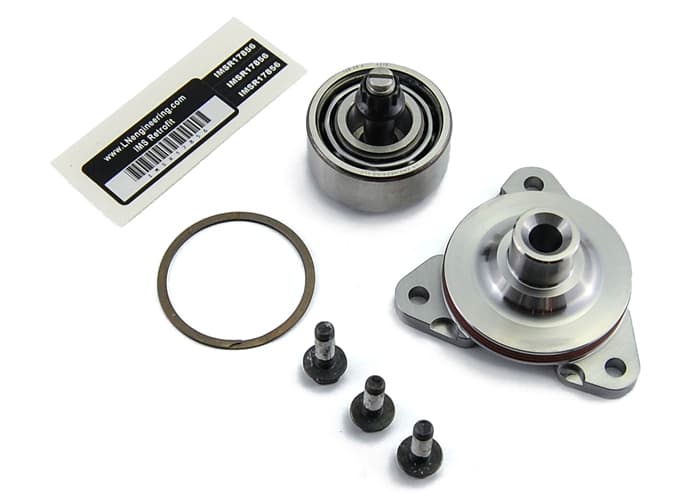
Home
>
Main Forum
>
Topic As I understand it... |  |  |
| Dumb question .... Re: DOF and IMS JM-Stamford,CT - 7 years ago |
If Porsche had drilled a few holes in the intermediate shaft to let it "breathe" and to let any oil which entered the shaft be expelled like a centrifuge, would that have cured the problem which ultimately led to IMS failures?
The DOF does seem to make a whole lot of sense. But I am asking about the foundational design. If they had a way for air an oil to get out of the shaft, would the failures have occurred?
The DOF does seem to make a whole lot of sense. But I am asking about the foundational design. If they had a way for air an oil to get out of the shaft, would the failures have occurred?
| I dont believe so. It would have . . . grant - 7 years ago |
MikenOH - 7 years ago |
Quote
JMstamford,ct
If Porsche had drilled a few holes in the intermediate shaft to let it "breathe" and to let any oil which entered the shaft be expelled like a centrifuge, would that have cured the problem which ultimately led to IMS failures?
The DOF does seem to make a whole lot of sense. But I am asking about the foundational design. If they had a way for air an oil to get out of the shaft, would the failures have occurred?
After reading Grant's comments about what he found in the tear-down, the holes in the IMS shaft also came to my mind. Getting that old oil out of there is a good idea w/o jeopardizing the strength of the shaft.
| Re: Dumb question .... Re: DOF and IMS Ed B - 7 years ago |
| Just FYI - I had *NO* seals in my bearing... grant - 7 years ago |
I am talking about the oil in the hollow IMS - the shaft
It has little incentive to migrate out at all
Grant
gee-lenahan-at-gee-mail-dot-com
Edited 1 time(s). Last edit at 01/15/2017 08:36PM by grant. (view changes)
It has little incentive to migrate out at all
Grant
gee-lenahan-at-gee-mail-dot-com
Edited 1 time(s). Last edit at 01/15/2017 08:36PM by grant. (view changes)
| As I understand it... JM-Stamford,CT - 7 years ago |
The oil gets into the bearing and the shaft due to the expansion and contraction of the heated then colled air in the IMS tube. If there was a vent hole(s) in the tube, it could vent at a place other than through the bearing. Thus the vented IMS tube would cure issue number 1 which is oil being sucked through the seal and bearing. It would also allow any oil which did get into the tube to escape preventing the acid condition.
Bottom line, if the lifetime seals and grease could conceivably work but for the incursion of oil through the bearing, could not a simple vent in the shaft cure a tone of problems?
Bottom line, if the lifetime seals and grease could conceivably work but for the incursion of oil through the bearing, could not a simple vent in the shaft cure a tone of problems?
If you injected pressurized oil, then you wouldn't need the sealed, ball bearing element in the first place. A bearing that uses no balls but floats on a pressurized flow of oil is called a plain bearing. That is exactly what is on the other side of the IMS and has been since Porsche started using IMSs in the 60s.
While no one really knows why Porsche removed the plain bearing from one end of the IMS, it is strongly suspected this was done as a cost cutting measure.
Good thinking, but you just designed the original engines.
[www.total911.com]
[en.wikipedia.org]
Peace
Bruce in Philly
While no one really knows why Porsche removed the plain bearing from one end of the IMS, it is strongly suspected this was done as a cost cutting measure.
Good thinking, but you just designed the original engines.
[www.total911.com]
[en.wikipedia.org]
Peace
Bruce in Philly
Sorry, only registered users may post in this forum.



